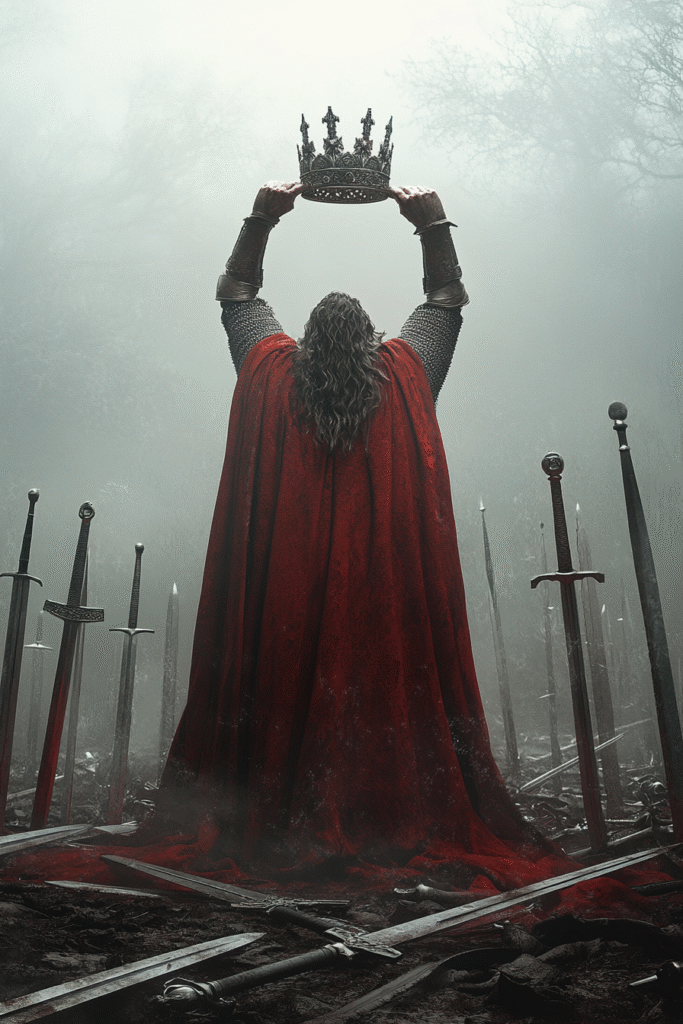For centuries, the story of King Arthur has captivated imaginations across the world. With tales of Camelot, the Knights of the Round Table, and the sword Excalibur, Arthur’s legend blends romance, chivalry, and mysticism. But how much of it is actually true? Was King Arthur a real historical figure, or is he purely mythical?
In this article, we explore the origins of Arthur’s legend, examine historical evidence, and piece together how this iconic figure may have risen to power.
The Origins of the Arthurian Legend
The earliest mentions of a figure resembling King Arthur come not from medieval romances, but from much older historical texts. The first known reference appears in the work of a Welsh monk named Nennius, who wrote the Historia Brittonum around 828 AD. In it, Arthur is described as a “dux bellorum”—a war leader, not a king—who fought twelve successful battles against the invading Saxons.
Later, the Annales Cambriae, written in the 10th century, claim that Arthur was victorious at the Battle of Badon Hill and fell at the Battle of Camlann, supposedly around the year 537 AD. These are the only two early sources suggesting that Arthur was a real person involved in historic battles.
The Historical Context: Britain After Rome
To understand Arthur’s potential rise to power, we must look at Britain in the 5th and 6th centuries AD, after the fall of the Roman Empire. Roman legions had withdrawn from the island around 410 AD, leaving the native Britons vulnerable to invasion by the Angles, Saxons, and Jutes—Germanic tribes from continental Europe.
This period, often referred to as Sub-Roman Britain, was marked by chaos, civil war, and regional power struggles. Former Roman cities decayed, and local leaders—often former military commanders or tribal chieftains—emerged as defenders of their communities. It was in this power vacuum that a figure like Arthur could have risen.
Was Arthur a Real Person?
Most historians believe that if Arthur did exist, he was likely a military leader or warlord, not a crowned king. Several theories suggest he may have been:
- A Romanized Briton who led the resistance against Saxon invaders.
- A composite figure, inspired by multiple warriors and leaders whose stories were merged over time.
- A symbolic character used to embody the hope of a united Britain during a period of disintegration.
One candidate for the “real” Arthur is Ambrosius Aurelianus, a Romano-British nobleman mentioned by the historian Gildas around 540 AD. Gildas describes Ambrosius as leading the Britons to victory against the Saxons after a series of devastating losses. Later traditions may have conflated his story with others, shaping the legend of Arthur.
The Battle of Mount Badon
The Battle of Mount Badon is one of the most significant pieces of historical evidence supporting the Arthurian legend. Although the exact location is unknown, it is widely believed to have taken place in the late 5th or early 6th century and resulted in a major defeat for the Saxons.
Gildas mentions the battle but not Arthur, while Historia Brittonum credits Arthur directly. If he was involved, this victory would have solidified his reputation as a national hero and protector of Britain. Some scholars even suggest this battle halted the Saxon advance for several decades.

How Did Arthur “Become” King?
In legend, Arthur becomes king by pulling the sword Excalibur from a stone—an act that proves his divine right to rule. In reality, any rise to power in 5th-century Britain would have required military success, charisma, and alliances with other powerful leaders.
Arthur’s supposed position as a “high king” may have been less about formal monarchy and more about coalition leadership—a leader of multiple tribes united against a common enemy. If Arthur did unify several regions under his command, he would have been seen as a figure of immense authority in a time of disunity.
The Evolution of the Legend
The story of Arthur grew exponentially in the Middle Ages, thanks in large part to the work of Geoffrey of Monmouth. In his 1136 work, Historia Regum Britanniae (“The History of the Kings of Britain”), Geoffrey transforms Arthur into a grand, chivalric king who conquers Rome and rules over a golden age.
From there, the French writer Chrétien de Troyes introduced elements such as Lancelot, the Holy Grail, and Camelot—none of which appear in earlier historical records. These romantic additions turned Arthur from a possible warrior-leader into the centerpiece of one of the most famous literary cycles in Western history.
Modern Scholarship and Skepticism
Today, historians remain divided. Some argue that Arthur never existed and is purely mythical, while others believe he may have been inspired by real leaders whose stories were embellished over centuries.
Key points fueling skepticism include:
- No contemporary account (from the 5th or 6th centuries) names Arthur directly.
- No archaeological evidence has been found that conclusively supports his existence.
- Most written sources emerged centuries after Arthur supposedly lived.
However, the enduring power of the legend suggests that there may have been a kernel of truth—a real leader whose memory became the foundation for myth.

Legacy of King Arthur
Whether historical or mythical, King Arthur remains one of the most enduring symbols of British cultural identity. His story has been retold in countless books, films, TV shows, and even political discourse.
Arthur represents:
- The ideal of unity in times of division.
- A bridge between ancient heroism and medieval chivalry.
- The timeless human need for noble leaders and just societies.
Conclusion
Was King Arthur real? The evidence is unclear, but the legend is stronger than ever. Whether as a powerful warlord who defended Britain from invaders or a mythological figure created to inspire hope and unity, Arthur’s story continues to resonate with people across generations.
His rise to power—through strength, myth, or memory—reflects a deep human desire for justice, order, and heroism in uncertain times.
